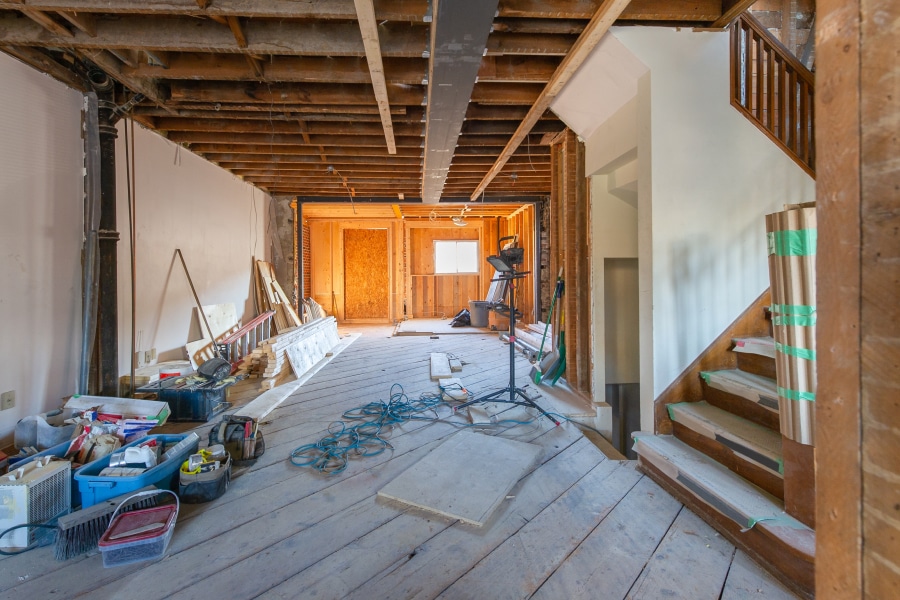In today’s climate-sensitive times, the challenge to make buildings more energy efficient and less polluting has risen to the top of society’s agenda.
In particular, we want residential buildings to be warm in winter and cool in hotter months without harming the environment. Mindful of the challenges posed to our climate, governments across the world have introduced challenging targets to reduce carbon emissions. Part of that process is retrofitting to upgrade millions of energy-leaking homes.
Newly built homes already incorporate the latest techniques and technologies to lower their energy consumption and emit fewer carbon emissions. The problem is we aren’t building such new homes in sufficient quantities.
Even then, evidence suggests some new homes fall short when it comes to meeting environmental targets.
Upgrades required
Another issue is that many existing homes are old, and in some cases, very old. According to the UK’s House Builder’s Federation (HBF), the UK has among the oldest housing in Europe, with 78% of homes having been built before 1980 compared with an EU average of 61%. More than a third (38%) of the UK’s housing stock was built before 1946, the HBF says, compared with an EU average of 18%.
For both the UK and the EU, there are an awful lot of aging homes that will need an upgrade. And the issue is pressing.


Bluebeam Resource Hub
Browse case studies, watch webinars, and see what’s new with Bluebeam.Research by the National Housing Federation found that in 2021 homes in England emitted more carbon emissions than the country’s cars, thanks to a combination of gas central heating and poor insulation.
Politicians across the region have sought to implement legislation that requires old homes to meet a set of minimum efficiency standards. However, such proposals have been met with fierce opposition based on cost.
Ultimately, most recognize the need to make homes more efficient, for both the householder’s sake and the wider environment.
So what are the benefits of retrofitting? What does the work involve? And how much does it cost?
Retrofit benefits
In the UK, the Low Energy Transformation Initiative (LETI) Guide illustrates how to “retrofit homes to make them fit for the future and support the UK’s net zero targets,” and is aimed at “architects, engineers, local authorities, social landlords, energy professionals, contractors and clients looking for guidance about best practice retrofit.”
The LETI guide says that lower fuel bills will inevitably result if buildings are substantially more energy efficient. There will also be the benefit of reduced maintenance costs. And as buildings use less energy and become more comfortable and durable, they will retain a higher asset value.
There are other knock-on impacts. According to LETI, we’ll see improved productivity “because occupants live in healthier and more comfortable buildings [and] reduced rent arrears and void periods because tenants enjoy lower bills and more pleasant buildings.”
There will also be lower costs relating to carbon such as offsetting, carbon taxes and carbon capture “because energy demand and peak loads have been reduced.”
Such benefits have been identified by engineering consultancy Arup, which highlights that in the UK city of Leeds the local authority worked with the private sector to improve properties from its own stock of 55,000 homes, including 115 towers.
In a deprived district of the city called Holbeck, 300 homes—70% private rental, 20% council owned, 10% owner occupied—have been upgraded “by being made weathertight, insulated with roof and external wall insulation and had new high-efficiency windows and doors fitted,” says Arup.
“The insulated homes are not just warmer and healthier for residents; they are also significantly cheaper to run,” it adds.
Fabric first
The Centre for Sustainable Energy (CSE) concurs that insulation is the best place to start, with “a ‘fabric-first’ approach prioritizing repairs, insulation, draught-proofing and ventilation before more exciting measures like solar panels and heat pumps.”
The CSE says tackling energy conservation should be followed by energy efficiency and then replacing existing energy sources such as gas with sustainable options. Crucially, the CSE notes that it’s “a waste of money to install a new measure if your home can’t retain heat.”
Across Europe, efforts are underway to carry out similar work to improve the energy efficiency of homes while also meeting carbon reduction targets.
The European Green Deal seeks to create the world’s first climate-neutral continent, and part of the initiative envisages renovating tens of millions of homes across Europe to tackle the threat of energy poverty and to decarbonize buildings.
Another European approach to retrofit is Energiesprong (energy leap), which is achieving success in the Netherlands, according to the Green Alliance. It comprises a “whole house” model of retrofit, creating a net zero energy home in one step using new technology. It also has the potential, says the Alliance, “to almost eliminate the carbon emissions of 41% of UK housing stock.”
Show us the money
Such efforts inevitably cost money. The cost of “deep retrofitting” the average UK home is likely around £69,000, according to a study by researchers at the University of Nottingham. This figure is way beyond most budgets.
Consequently, the UK government has been urged to subsidize such work, with supporters highlighting the benefits: lower energy bills for households, thousands of new jobs to service the required work and increased tax revenues.
However, short-term pressures on the public purse might put off legislators, despite the longer-term benefits. The cost question vexes not just the UK. In Europe, it has been suggested that an EU-wide retrofit program could cost upwards of a trillion euros. Some, particularly in Italy, are pushing back over the expenditure.
Meanwhile, progress in upgrading homes across the UK and Europe is painfully slow. Research suggests 210,000 homes in London need to be retrofitted annually until 2030 if the UK’s capital is to hit its net zero target, yet the environment-focused Green Party calculated work had been carried out on fewer than 5,000 homes.
The challenges—pressures on governments’ abilities to invest in retrofitting programs, the availability of materials and having enough skilled people to carry out the work—are certainly significant. But if we are to make homes both more efficient and better for the planet, solutions need to be found. There is no alternative.
Commercial buildings’ carbon conundrum
It’s not just older residential properties that need to be overhauled to make them more energy efficient and comply with legislation designed to drastically reduce carbon emissions.
While new office and commercial developments often boast of BREEAM Outstanding this, LEED that and NABERS the other, older buildings in this category can often be highly energy-inefficient, making life uncomfortable for both occupiers and, through their emissions, the wider world.
According to the UK Green Building Council (UKGBC), commercial buildings currently represent 23% of the built environment’s carbon emissions in the UK: “Securing a net zero built environment in line with the Paris Agreement cannot be achieved without addressing the operational emissions associated with this sector.”
A UKGBC study found that what it called a “light retrofit” could save 15% in operational energy use, but that for a real impact, one leading to an energy reduction of 60% to 65%, a “deep retrofit” would be required.
Building systems needed to be moved away from fossil fuels, the UKGBC said, but it warned that more needed to be done so the country’s commercial estate met best practice 2035-2050 targets, which the UK Net Zero Carbon Buildings Standard is tied into.
“Building fabric improvements are generally necessary to reach higher levels of performance. However, these measures can have a relatively high embodied carbon impact.”
“Fabric upgrades should therefore be planned as part of significant refurbishment or repositioning strategies, and when building components are nearing their end of life, so that upgrades have both a marginal cost and marginal whole life carbon impact,” it added.
Europe is facing a similar issue, and the recently adopted Energy Performance of Buildings Directive, while still to be approved by the European Council, aims to address it. Under the directive, EU member states must renovate the 16% worst-performing non-residential buildings by 2030 and the worst-performing 26% by 2033, via a series of minimum energy performance requirements.
Meanwhile, the Europe Green Deal seeks to renovate both public and private buildings to reduce carbon emissions to net zero by 2050. The cost will be significant. Morgan Stanley, the US investment bank, reckons a whopping €5 trillion will need to be invested in renovation and other programs to achieve the goal.
“For commercial properties, becoming more energy-efficient—and therefore cutting operating costs—is a crucial step in their long-term value proposition,” the bank added.
Meanwhile, the work involved in retrofitting will likely lead to an economic boost all of its own; the global energy retrofit sector—effectively the market for products and services that can contribute to improving the sustainability and performance of existing buildings—is predicted to grow by nearly 50% by 2030, from $111 billion in 2022 to $166 billion, according to Coherent Market Insights.
Morgan Stanley said investors “with an eye to the long-term benefit of renovation could find opportunity in manufacturing companies that create [such] energy-efficient materials and products.”











